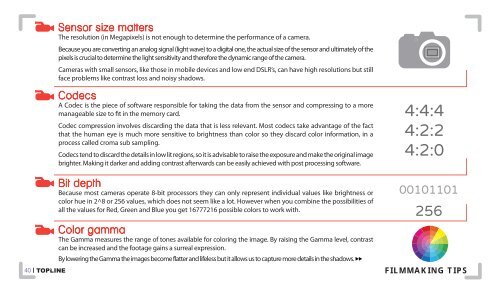TOPLINE March 2019 #3
The Royal Film Commission – Jordan (RFC) is pleased to introduce its online quarterly magazine TOPLINE, featuring articles related to filmmaking with a focus on Jordan. Every issue will put the spotlight on a specific topic, highlight some film-related activities in Jordan, offer a space for film buffs to express themselves, and allocate a special section for film and book reviews as well as filmmaking tips. We hope you will enjoy reading it as much as we enjoyed preparing it.
The Royal Film Commission – Jordan (RFC) is pleased to introduce its online quarterly magazine TOPLINE, featuring articles related to filmmaking with a focus on Jordan. Every issue will put the spotlight on a specific topic, highlight some film-related activities in Jordan, offer a space for film buffs to express themselves, and allocate a special section for film and book reviews as well as filmmaking tips.
We hope you will enjoy reading it as much as we enjoyed preparing it.
You also want an ePaper? Increase the reach of your titles
YUMPU automatically turns print PDFs into web optimized ePapers that Google loves.
Sensor size matters<br />
The resolution (in Megapixels) is not enough to determine the performance of a camera.<br />
Because you are converting an analog signal (light wave) to a digital one, the actual size of the sensor and ultimately of the<br />
pixels is crucial to determine the light sensitivity and therefore the dynamic range of the camera.<br />
Cameras with small sensors, like those in mobile devices and low end DSLR’s, can have high resolutions but still<br />
face problems like contrast loss and noisy shadows.<br />
Codecs<br />
A Codec is the piece of software responsible for taking the data from the sensor and compressing to a more<br />
manageable size to fit in the memory card.<br />
Codec compression involves discarding the data that is less relevant. Most codecs take advantage of the fact<br />
that the human eye is much more sensitive to brightness than color so they discard color information, in a<br />
process called croma sub sampling.<br />
Codecs tend to discard the details in low lit regions, so it is advisable to raise the exposure and make the original image<br />
brighter. Making it darker and adding contrast afterwards can be easily achieved with post processing software.<br />
Bit depth<br />
Because most cameras operate 8-bit processors they can only represent individual values like brightness or<br />
color hue in 2^8 or 256 values, which does not seem like a lot. However when you combine the possibilities of<br />
all the values for Red, Green and Blue you get 16777216 possible colors to work with.<br />
Color gamma<br />
The Gamma measures the range of tones available for coloring the image. By raising the Gamma level, contrast<br />
can be increased and the footage gains a surreal expression.<br />
By lowering the Gamma the images become flatter and lifeless but it allows us to capture more details in the shadows.<br />
40 FILMMAKING TIPS








